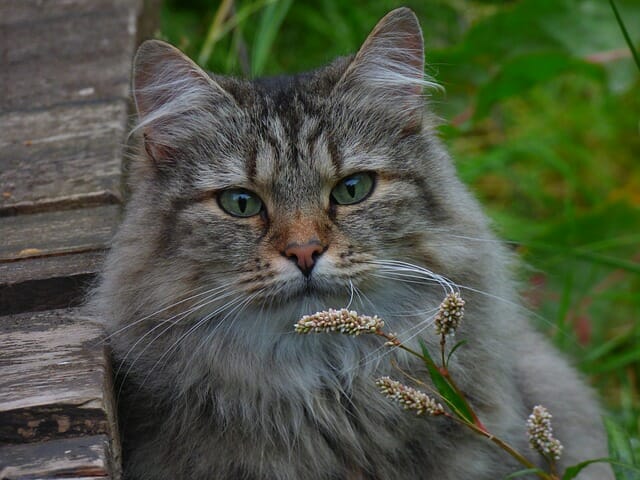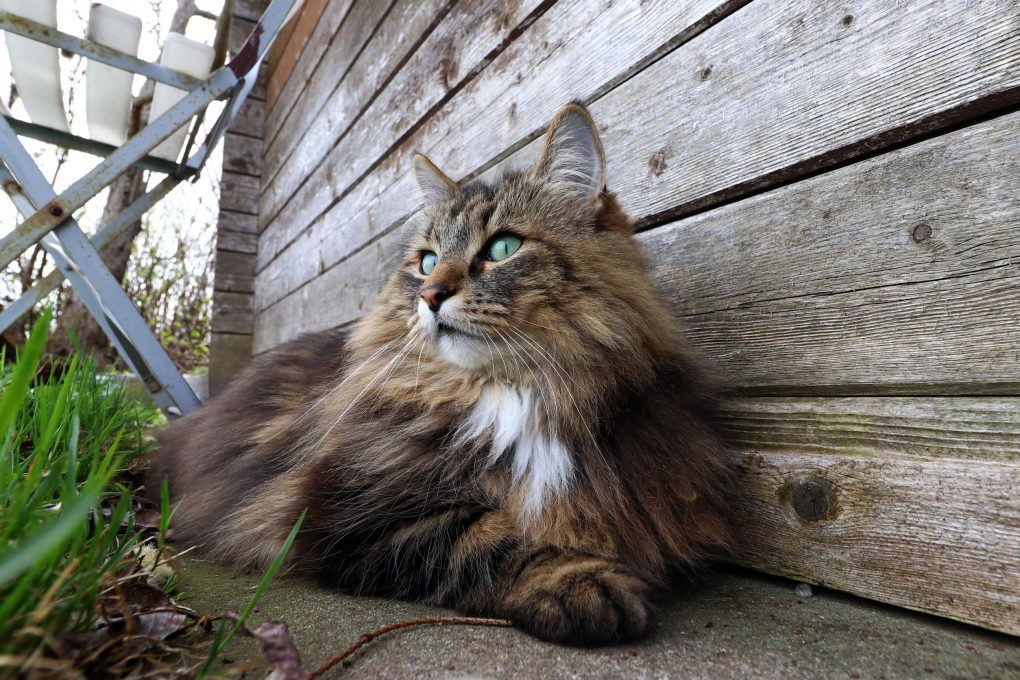Do Norwegian Forest Cats Shed: Ways to Manage Shedding in This Cat Breed
Yes, Norwegian Forest cats do shed, particularly during the spring when they shed their winter coats. However, they are not considered to be particularly heavy shedders compared to some other breeds. Instead, their long and dense coats require regular grooming to prevent matting and tangles and to remove loose hair.
Brushing their coats once or twice a week can help to reduce shedding and keep their coats healthy and shiny. During shedding seasons, more frequent brushing may be necessary. Regular grooming can also help prevent hairballs, a common issue for long-haired cats like Norwegian Forest cats.


Ways to Manage Shedding in Norwegian Forest Cats
Table of Contents
Brushing
Brushing your Norwegian Forest cat regularly can help to remove loose hair that would otherwise be shed around your home. This can help keep your home clean and tidy and reduce the amount of hair you and your cat ingest through grooming.
The long, dense coat of Norwegian Forest cats can easily become matted and tangled, which can be uncomfortable and irritate the skin. Brushing your cat regularly can help to prevent matting and tangles by removing dead hair and keeping the coat smooth and free of knots.
Brushing your cat’s coat can also help distribute natural oils their skin produces throughout the coat. This can help to keep the coat healthy and shiny and reduce shedding by preventing dry, brittle hair from breaking and falling out.
Additionally, brushing your cat can be a great way to bond with them and establish a regular grooming routine that they will come to enjoy. This can help reduce stress and anxiety and make grooming a positive experience for you and your cat.
Bathing
Bathing can help remove loose hair from your cat’s coat, reducing shedding in your home. A bath can help to loosen and remove dead hair that would otherwise be shed around your home. It can also help to improve their hygiene and overall health. For example, regular baths can help remove dirt, debris, and allergens from your cat’s coat and skin, reducing the risk of skin irritations and infections.
Baths can also help reduce matting in your cat’s coat. Matting occurs when loose hair becomes tangled and matted, which can be painful and uncomfortable for your cat. A bath can help loosen and untangle matted hair, making brushing and grooming your cat easier.
Bathing your Norwegian Forest cat can help promote a healthy coat by removing dirt, debris, and excess oil from its coat. This can help to reduce shedding by promoting a healthy coat that is less likely to break and shed hair.
It’s important to note that while bathing can help manage shedding in Norwegian Forest cats, it’s important to be cautious with bathing, as over-bathing can strip the coat of natural oils and dry out the skin. It’s generally recommended to bathe your cat once every few months or as needed. It’s also important to use a cat-specific shampoo and conditioner that is gentle on your cat’s skin and coat.
Diet
A diet rich in essential nutrients can help promote a healthy coat and reduce shedding. Nutrients such as protein, fatty acids, and vitamins can help to strengthen hair follicles and reduce hair loss, leading to a healthier coat and less shedding.


Adequate hydration is important for maintaining healthy skin and coats in cats. A diet high in moisture, such as wet food or a combination of wet and dry food, can help keep your cat hydrated and promote a healthy coat.
Some cats may be allergic to certain ingredients in their food, leading to skin irritations and excessive shedding. Choosing a hypoallergenic diet free from common allergens, such as grains or certain proteins, can help reduce shedding in cats with food allergies.
Maintaining a healthy weight is important for overall cat health and can also help reduce shedding. Overweight cats are more prone to skin irritations and excessive shedding, so ensuring that your cat is on a healthy diet and maintaining a healthy weight can help to reduce shedding.
Water
Water is necessary for maintaining good hydration in your cat, essential for healthy skin and coat. When your cat is dehydrated, their skin becomes dry and flaky, which can lead to excessive shedding. Providing your cat with plenty of fresh, clean water is important for keeping them hydrated and maintaining a healthy coat.
In addition to hydration, water can also help to moisturize your cat’s skin and coat. This is especially important during the winter when indoor heating can dry out the air, leading to dry skin and coat. In addition, you can use a humidifier to add moisture to the air or provide your cat with a water bowl or fountain to encourage them to drink more water and maintain good moisture levels.
Water is also important for maintaining urinary health in cats. Cats not drinking enough water risk developing urinary tract infections, which can lead to excessive grooming and shedding. Providing your cat with plenty of fresh water can help to prevent urinary tract infections and promote a healthy coat.
Hygiene
Good hygiene practices can be crucial in managing sheds in Norwegian Forest cats. For instance, regular grooming is an important aspect of managing to shed in cats. Brushing your cat’s coat regularly can help remove loose hair and prevent matting, leading to excessive shedding.
Choosing the right brush for your cat’s coat is important, as different brushes are designed for different types of fur. For example, a slicker brush or comb with wide-spaced teeth may suit a Norwegian Forest cat’s long, thick fur.
Regularly cleaning your cat’s bedding, litter box, and surroundings can help manage the shed. This can help reduce the amount of hair accumulating on surfaces and in the air, leading to a cleaner environment and less shedding.
Trimming your cat’s nails regularly can also help reduce shedding. For example, cats with overgrown nails may scratch themselves excessively, leading to hair loss and shedding. Trimming your cat’s nails regularly can help to prevent this and promote a healthier coat.
